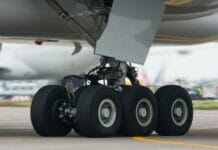Sailplanes are magnificent machines. They soar high in the sky, elegantly jumping from one stream of rising air onto another. It is a really beautiful sight and, we believe, a nice thing to experience too. However, one sailplane is not looking for fun – it is getting ready to make world‘s jaws drop as it will literally reach the edge of space at an altitude that was never touched by any other piloted aircraft before.
It is called Airbus Perlan Mission II, but before we start talking about its impressive plans and goals, we should take a look at what makes its dream possible. There is a phenomenon called mountain waves. It is waves of air that have been used by glider pilots since 1932. Einar Enevoldson, a NASA Test Pilot, once noticed that these waves might by a little taller than people think and spent the period of 1992-1998 researching them. The data he collected left little doubt that these waves actually reach stratosphere and are strong enough to take a sailplane there.

That is how Perlan Project was born with an objective of researching stratospheric waves from their inside. Scientists also say that taking a glider to the stratosphere could help get more reliable data about planet’s climate, since measurement will not be corrupted by the aircraft’s own polution.
The task of getting so high is far from easy. First of all, these waves are only active during winter and only close to the Earth’s poles. Having in mind that mountains are necessary too, it does not leave that many places that they can try their idea at. And, of course, reaching high altitudes with a sailplane requires some daredevil characteristics as well as specially prepared glider.
On August 30, 2006 Steve Fossett and Einar Enevoldson took the standard Parlan 1 glider to the altitude of 50,671 feet (15,460 m) – that is an official record for gliders. Cabin was not pressurized, so pilots had to wear pressure suits borrowed from NASA. Now Perlan is moving onto the second stage, when the team will be aiming to reach the altitude of 90,000 feet (27,432 kilometres) – something no other piloted aircraft has ever been able to do.

Standard gliders, obviously, cannot go that high, so a new aircraft had to be built. Airbus Perlan Mission II, named after the main sponsor, has a pressurized cabin, wingspan of 84 feet (25.6 meters) and weighs around 816 kg. It was already flying in Argentina last year, but due to bad weather could not reach the desired altitude. Instead, team performed a number of tests that gave them needed information for future attempts. However, Airbus Perlan Mission II did reach its own record altitude of 30,615 feet (9.33 km) in April this year.
Some more information and flight footage
Conditions at the edge of space are not the most pleasant, as the air density at the record altitude is only 2 % of what we have at sea level, temperature is way below than what commercial airliners have to deal with and speed that Airbus Perlan Mission II is going to achieve is stressfull for any type of aircraft – 403 mph (648.47 kph).
Airbus Perlan Mission II is going to reach altitudes that were never touched before by a piloted aircraft – even U-2 or SR-71 have never been that high. However, this is only the second stage from three – in the final stage glider will try reaching 100,000 feet (almost 30.5 km). For that transonic wings are going to be needed.
At the moment Airbus Perlan Mission II is on its way to El Calafate in Argentina. Tests are scheduled for July and attempts to reach the altitude of 90,000 feet – in 2019. We’re going to post on the progress of the project as well as more information about the technical characteristics of the aircraft. So stay tuned and cross your fingers for Perlan’s success.




